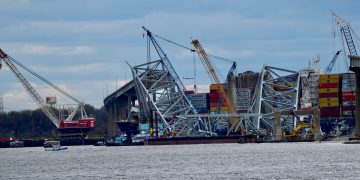Professor Patrick Hudson examines leadership in the context of the cultural safety that an organisation has. He explains that unlike other forms of leadership, safety leadership is for everyone and involves publicly reaching for one level higher on the culture ladder than the organisation is currently placed.
Regarding leadership, Prof. Hudson says that a common idea people have is of the ‘charismatic leader making fine speeches, exhorting the workforce to move forward while always finishing with, “And be safe.” However, this approach leaves a lot to be desired especially when we know who will be blamed if there is an incident.
[smlsubform prepend=”GET THE SAFETY4SEA IN YOUR INBOX!” showname=false emailtxt=”” emailholder=”Enter your email address” showsubmit=true submittxt=”Submit” jsthanks=false thankyou=”Thank you for subscribing to our mailing list”]
Another approach to leadership is transactional where all agree about what the workforce has to do, in order to avoid accidents. In this case, we still know who will be blamed when there is one and it’s not usually the managers who lead by setting tasks and targets for others.
A better style, according to Mr. Hudson, is the transformational where leaders work to engage people and create consciousness for safety, often by appealing to their better selves and using emotionally-loaded examples to get the message home. Blame is not such an issue with transformational leaders, but the results of such appeal is often to improve the safety climate and the workforce’s perception of the leader, and not necessarily to actually make them work more safely.
So examining what leaders actually do and why people want to follow them, Patrick Hudson mentions that the majority of people believe that leaders know what they want and they can be trusted. What is more, real leaders have to know what their followers need, and especially what is appropriate for them at that particular moment and specific conditions.
Nonetheless, he adds that there is a big difference between the standard notion of leadership, outside of the safety arena, and what we can call safety leadership. Namely, despite the fact that we can usually recognise leaders and followers in safety, everyone can have a clear idea of what it means to be safe and act upon it in public. So it becomes clear that anyone can lead, as well as everyone can follow in safety. Managers lead workers but workers can also lead their managers and their colleagues by setting their example.
What I’ve learnt about leadership and safety leadership in particular, is that it is not just about the style but more about the substance. The most glaring gap, the bit people find hardest to do is substance. What do we, as individuals, and as an organisation – actually mean by safety? This really has to be a lot more than just the emotional call to be safe. If you have that articulated idea in your head then you can create the clear vision, you know what you want and you can communicate it much more easily
Patrick Hudson states.
In addition, most organisations are facing problems in safety. In order to excel in this sector they need a roadmap. This is what the safety culture ladder offers, a structure to help decide:
- Where you are now;
- Where you want to go to;
- Support the process of getting there.
This ladder consists of 5 stages. Namely:
- Pathological: Who cares as long as we are not caught;
- Reactive: Safety is important, we do a lot every time we have an accident;
- Calculative: We have systems in place to manage all hazards;
- Proactive: Safety leadership and values drive effective improvement;
- Generative: High Reliability Orgs is how we do business.
In order for a company to go up the ladder, Mr. Hudson found out that many organisations, not only did they think they were higher up the ladder than he suspected them to be, but when challenged they would say, ‘But we have this in place and that in place’. After that he realised that they thought having things like reporting systems or communication strategies in place, was going to be enough.
He also became aware that actually putting safety practices into operation was a distinctly new challenge that will be characteristic of having the management system actually running.
































































